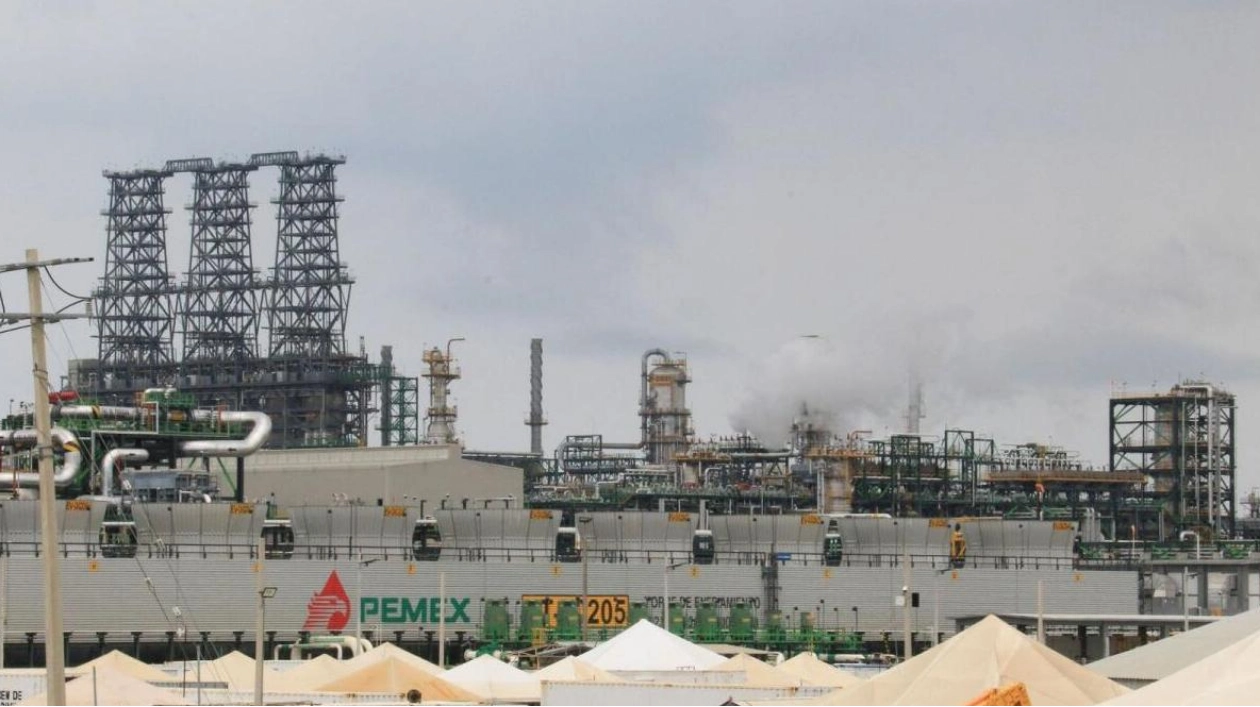Mexico's incoming President Claudia Sheinbaum is set to confront a fresh challenge in achieving energy independence, a goal that prompted her predecessor to invest $17 billion in a new refinery due to a domestic crude supply deficit. Despite being a significant crude producer, Mexico's output from older oil fields, primarily located in the Gulf of Mexico, has plummeted to a more than four-decade low. Without substantial investment in exploration and production, Mexico could find itself importing crude to support its expanded refinery capacity in the coming decade, marking a reversal for this major global exporter. For years, state-owned Pemex has struggled to meet local fuel demand due to its outdated refineries' inability to process the heavy Maya crude it predominantly extracts, leading to crude exports while importing gasoline and diesel, largely from the United States.
Outgoing President Andres Manuel Lopez Obrador aimed to rectify this perceived humiliating reliance on imported motor fuels by commissioning a new 340,000 barrels per day (bpd) refinery in his home state of Tabasco to address the fuel supply shortfall caused by Pemex's six refineries, which had gone decades without adequate investment to operate at full capacity. Despite being over budget and behind schedule, Lopez Obrador's Olmeca refinery in Dos Bocas, once fully operational, may briefly enable Mexico to nearly meet its motor fuel consumption needs. However, projections from the energy ministry, previously unreported and seen by Reuters, indicate that this period would be short-lived, with Pemex likely needing to import crude as production is expected to decline rapidly from 2030.
The energy ministry's scenarios, which include some new discoveries, project a rapid decline in production from 2030, suggesting that Mexico may need to start importing crude as early as the next decade to operate its refineries near capacity, and would cease exporting crude. Zama and Trion, potential new fields, could temporarily boost production to nearly 2.247 million bpd in 2028 from around 1.8 million bpd currently. However, these fields could also disappoint, mirroring other recent discoveries. Alma America Porres, a former commissioner at the hydrocarbon regulator, suggests that Mexico's proven crude reserves indicate the shortfall may occur even sooner.
Lopez Obrador has heavily invested in the six refineries, increasing processing to about 1 million bpd, yet these outdated refineries produce record amounts of fuel oil instead of the much-needed motor fuels. With the Olmeca refinery starting up and repairs to older ones, the energy ministry forecasts they will process 1.6 million bpd of crude, still below consumption levels of around 1.7 million bpd, according to International Energy Agency data. Experts argue that the significant funds spent on the Olmeca refinery could have been better utilized in oilfield exploration and production, and diversifying into renewable energy sources. Lopez Obrador, a resource nationalist, has not encouraged exploration and investment in deepwater and onshore shale production, areas where Pemex lacks expertise and funding.
The legal framework allowing participation from other companies to operate fields independently or in association with Pemex remains intact despite other reforms prioritizing Pemex. Pemex's financial constraints mean it lacks the necessary investment for exploration, a role where private companies could add value by investing without costing the Mexican state. Pemex could greatly benefit from private sector participation, according to several engineers. Incoming President Sheinbaum, with a background in energy engineering and experience as a lead author for the U.N. Intergovernmental Panel on Climate Change, has proposed increased investment in wind and solar infrastructure for electricity generation. Her plans for Pemex are unclear, but there may be collaboration with private companies during her presidency to enhance exploration and production, particularly with those already operating in Mexico.






